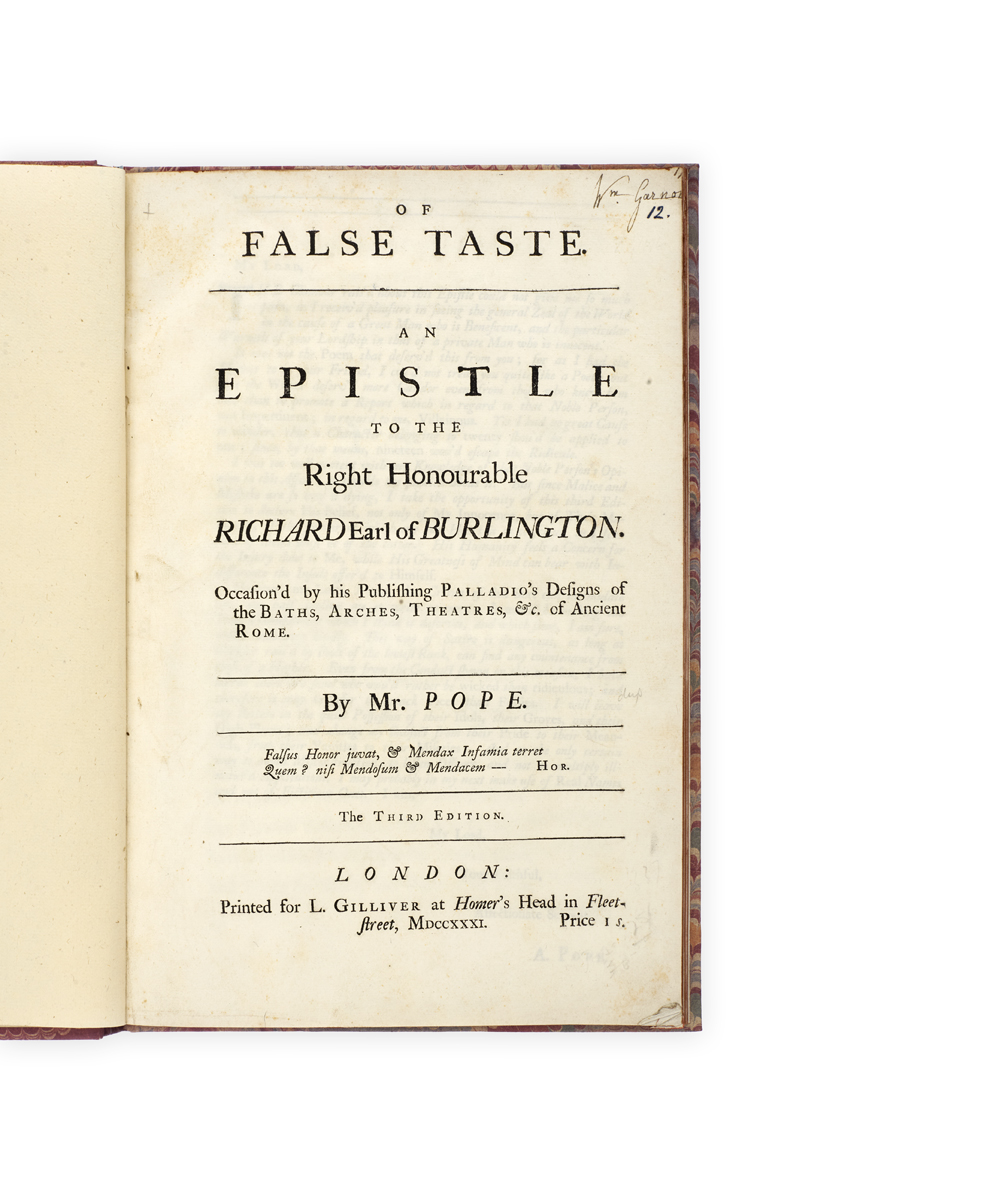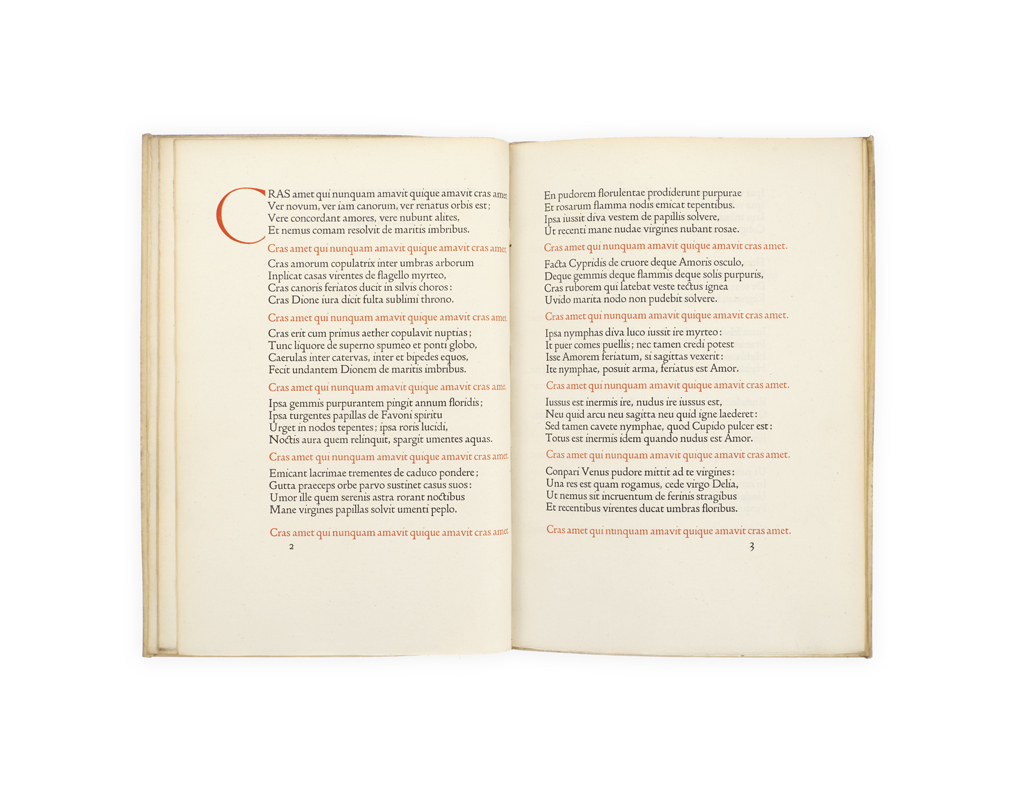ZAPPI, Giambattista and Faustina.
Rime di Giambattista Felice Zappi e di Faustina Maratti sua consorte.
Nice, Società Tipog. 1781.
Small 8vo, pp. 128; title within border, woodcut headpiece; some foxing and spotting in places throughout, the odd worm trace in gutter, not affecting text; in contemporary blue wrappers, decorated with ink frame; title in ink on spine; somewhat dustsoiled, spine worn with small loss to head; with the ownership signature of the Ligurian priest Vincenzo Lotti, dated 1800, on front paste-down.
Added to your basket:
Rime di Giambattista Felice Zappi e di Faustina Maratti sua consorte.
Uncommon Nice printing of the collected poetry of one of the most prominent literary couples of early 18th century Rome, Faustina Maratti (1679–1745) and her husband Giambattista Zappi (1667–1719). First published after Zappi’s death in 1723, the collection consists of 73 poems by Zappi and 38 by Maratti. The two had met through the Accademia degli Arcadi, of which Zappi was a founder member and Maratti was one of the earliest female members. The present printing is by the Société typographique in Nice, established in 1779 by Charles Cristini, which specialised in the printing of Italian classics.
Outwith Continental Europe, OCLC records copies at Yale, Harvard, Wisconsin, Missouri, and the BL.

